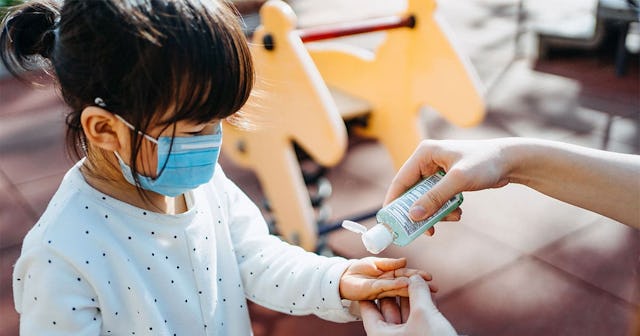Study: Kids Under 5 May Carry Higher Levels Of Coronavirus Than Adults

According to a new study, children as young as 5 may be able to spread coronavirus similarly to adults
When the first cases of COVID-19 were reported in December 2019 in Wuhan, China, health experts believed that the virus spared children for the most part. Since then, we have continued to learn more about how COVID-19 impacts younger people, ranging from identifying unusual manifestations of the virus (including COVID toes and Kawasaki disease-like symptoms in kids) to the role they play in spreading it. The latest study involving children and coronavirus has to do with the amount of the virus they can carry — and their potential to spread it similarly to adults.
The study, courtesy of researchers from Ann & Robert H. Lurie Children’s Hospital of Chicago and published in JAMA Pediatrics, found that compared to adults and older children, children under 5 years with mild to moderate COVID-19 have much higher levels of genetic material for the virus in the nose.
Lead author, Taylor Heald-Sargent, MD, PhD, pediatric infectious diseases specialist at Lurie Children’s and Assistant Professor of Pediatrics at Northwestern University Feinberg School of Medicine, and her colleagues looked at 145 cases of mild to moderate COVID-19 illness during the first week of symptom onset. They then compared the viral load in three age groups — children younger than 5 years, children 5-17 years and adults 18-65 years.
“We found that children under 5 with COVID-19 have a higher viral load than older children and adults, which may suggest greater transmission, as we see with respiratory syncytial virus, also known as RSV,” Dr. Heald-Sargent explains in a press release.
This could mean that even the youngest of children may transmit the virus as much as other age groups. Researchers also point out that this information could have been overlooked due to the fact that schools and daycares promptly closed as a result of the pandemic.
In terms of the 2020-2021 school year, she points out that their findings are significant. “This has important public health implications, especially during discussions on the safety of reopening schools and daycare.”
In an interview with The New York Times, Dr. Heald-Sargent explained that sending children back to school “is so complicated.” She added: “We can’t assume that just because kids aren’t getting sick, or very sick, that they don’t have the virus.”
In the study’s press release she does acknowledge that their findings do not serve as conclusive evidence that young children spread the virus similar to adults. “Our study was not designed to prove that younger children spread COVID-19 as much as adults, but it is a possibility,” Dr. Heald-Sargent clarified. “We need to take that into account in efforts to reduce transmission as we continue to learn more about this virus.”
The debate of whether to send children back to school has been a heated one amongst educators, politicians, health experts, and parents. While going to school in the flesh is likely better for children’s mental health, when it comes to the physical health of them and others, many are concerned. Early school openings have done little to ease worries. Last week a student in Indiana tested positive on the first day of classes, exposing several students and staff to the virus. And, today it was revealed that 260 employees at a Georgia school have tested positive for the virus or been directly exposed to it.